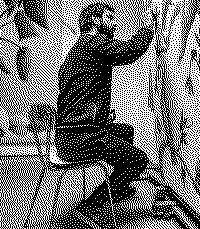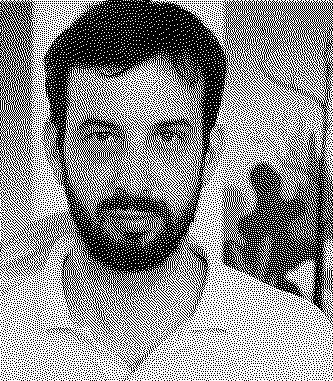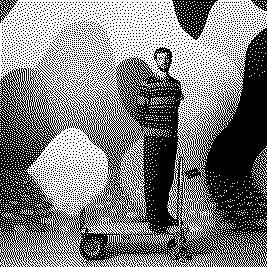Artists/Nicolas Party
Fast Facts
Pastel Medium and Unique Textures
Party frequently uses pastels, which allows him to achieve soft yet intense textures in his artwork. His use of pastel contributes to the dreamlike and surreal quality of his images.
Vibrant Colors and Figurative Style
Nicolas Party is renowned for his use of vivid, saturated colors and a distinctive figurative style. His works often feature landscapes, portraits, and still lifes rendered in bold hues that give a contemporary twist to traditional subjects.
Influence of Art History
His work is heavily influenced by art history, particularly the styles and techniques of Renaissance and Baroque artists. Party reinterprets these historical influences in a modern context, creating a unique blend of the old and new.
Mural and Site-Specific Works
Party is also known for his murals and site-specific installations. These large-scale works are immersive and often tailored to the specific environment in which they are displayed, creating a dialogue between the artwork and its surroundings.
Playful and Surreal Imagery
His artwork is characterized by playful and sometimes surreal imagery. Party’s compositions often include unexpected elements and whimsical details, inviting viewers to explore and reinterpret familiar scenes and objects.
Dynamic Composition and Perspective
Party’s compositions are dynamic, with a distinctive use of perspective and spatial arrangements. He often plays with scale and viewpoint to create engaging and thought-provoking scenes.
Interdisciplinary Approach
In addition to painting and drawing, Nicolas Party works across multiple disciplines, including sculpture and performance. This interdisciplinary approach allows him to explore different mediums and techniques, further enriching his artistic practice.
Bodies of Work
-

Landscapes
-

Sunsets
-

Grotto (Caves)
-

Trees
-

Single Trees
-

Tree Trunks
-

Portraits
-

Nudes
-

Double Portraits
2013–2016
-

Portraits with Animals
-

Recent Portraits
-

Still Lifes
-

Pots
-

Houses
-

Birds
-

Cats
-

Fingers
-

Works on Marble
-

Watercolors
-

Peaches
-

Sculpture Heads
-

Busts
-

Bronze Cats
-

Murals
-

157 Days of Sunshine (2013)
-

Café Party
-

Hirshhorn Museum (2017)
-

Marciano Art Foundation
-

Children's Hospital, Los Angeles
-

The Frick
-

Hammer Museum
-

P
Biography



Nicolas Party, born in 1980 in Lausanne, Switzerland, is a contemporary visual artist known for his vivid and immersive artworks. He lives and works in New York City and Brussels.
Party’s artistic journey began with graffiti, but he later transitioned to more traditional forms, earning his BFA from the Lausanne School of Art in 2004 and his MFA from the Glasgow School of Art in 2009 (Wikipedia) (Fondation Vincent Van Gogh Arles).
Party’s work is characterized by its vibrant color palette and clear, stylized forms, often depicting landscapes, still lifes, and portraits. His use of pastel as a primary medium stands out, enabling him to achieve rich, saturated hues that give his works a distinctive, almost dreamlike quality. Influences in his work range from classical artists like Giorgio Morandi and Félix Vallotton to contemporary painters, reflecting a blend of historical and modern elements (Sothebys.com) (Fondation Vincent Van Gogh Arles.
Over the years, Party has held numerous solo exhibitions at prestigious venues, including the Hirshhorn Museum in Washington D.C., the Montreal Museum of Fine Arts, and the Magritte Museum in Brussels. His exhibitions often incorporate large-scale wall murals, transforming gallery spaces into immersive environments that challenge the viewer’s perception of space and form (Wikipedia) (Hauser & Wirth) .
Party’s work has achieved significant recognition in the art market, with pieces fetching high prices at auction houses like Sotheby’s and Christie’s. Notably, his pastel work "Portrait" sold for $650,000 in a Sotheby’s auction, exceeding its high estimate (Sothebys.com).
Represented by major galleries such as Hauser & Wirth, The Modern Institute, and Karma, Party continues to expand his artistic repertoire, engaging with diverse media and exploring new thematic territories. His art remains deeply connected to his exploration of color, form, and the intersection between natural and artificial worlds (Hauser & Wirth) (Fondation Vincent Van Gogh Arles).
Importance
Nicolas Party is considered an important artist for several reasons, encompassing his unique approach to art, his engagement with historical and contemporary influences, and his impact on the art world through immersive and interdisciplinary exhibitions.
Interdisciplinary Approach
Party is known for his multi-media, interdisciplinary approach to art. He employs various mediums, with a particular focus on pastels, to create immersive exhibitions that engage viewers in a comprehensive sensory experience. This approach has garnered attention for its innovative fusion of traditional techniques with contemporary perspectives. His exhibitions often include large-scale murals, sculptures, and installations that transform spaces into immersive environments (Wikipedia) (Hauser & Wirth) .
Innovative Use of Color and Form
Party's work is celebrated for its vibrant use of color and playful forms, which challenge traditional perceptions of space and materiality. By blending painting with sculptural and installation elements, Party revitalizes classical concepts and engages in a dialogue with art history while also pushing the boundaries of these mediums into new, uncharted territories. His works often draw comparisons to artists like Henri Matisse and David Hockney due to his over-saturated palette and sensual, concise forms (Wikipedia) (Sothebys.com) (Fondation Vincent Van Gogh Arles).
Engagement with Art History
Party draws inspiration from a broad range of artists across history, including Rosalba Carriera, Félix Vallotton, Milton Avery, Pablo Picasso, and Giorgio Morandi. His ability to weave these influences into his own unique visual language while contributing to contemporary conversations around art makes his work a bridge between the past and the present. This deep engagement with art history enriches his work, offering layers of meaning for viewers to uncover. His paintings and murals often reference historical styles and motifs, reinterpreting them in a contemporary context (Wikipedia) (Fondation Vincent Van Gogh Arles).
Cultural and Societal Commentary
Party’s work often contains layers of cultural and societal commentary, subtly interwoven through his choice of subjects and execution styles. For example, his exhibition "Sunrise, Sunset" at the Hirshhorn Museum and Sculpture Garden explored the concept of time and human perception in the context of political events, showcasing his ability to intertwine art with broader human experiences and concerns. This thematic depth adds another layer to his already complex and visually appealing work (Wikipedia) (Fondation Vincent Van Gogh Arles).
Recognition and Representation
Party is represented by several prestigious galleries worldwide, including Hauser & Wirth, and his work has been the subject of solo exhibitions in major museums and art institutions. This level of recognition and representation is indicative of his importance and influence in the contemporary art world. His exhibitions have been hosted by institutions such as the Montreal Museum of Fine Arts, the Dallas Museum of Art, and the Magritte Museum, further cementing his status as a leading contemporary artist (Wikipedia) (Hauser & Wirth).
Technique
Influence of Art History
Party's work often pays homage to a variety of art historical styles, including Surrealism, Symbolism, and Post-Impressionism. This is visible in his reinterpretations of traditional genres, such as portraiture and landscape, through a distinctly contemporary lens. His engagement with historical influences enriches his work, creating a dialogue between past and present art forms. Party cites influences from artists such as Giorgio Morandi, Félix Vallotton, and Pablo Picasso, seamlessly blending their styles into his own creations (Wikipedia) (Fondation Vincent Van Gogh Arles).
Vibrant Pastel Colors
Party is particularly known for his bold and vibrant use of color. His choice of colors often deviates from naturalistic representation, instead employing a variety of bright, contrasting hues that help to create a surreal, dreamlike atmosphere in his work. The unusual color combinations become one of the most striking aspects of his work, giving it a distinctive visual identity. His use of pastels, in particular, allows for vivid and precise color application, adding to the unique texture and depth of his pieces (Wikipedia) (Fondation Vincent Van Gogh Arles).
Variety of Mediums
Party works across a variety of mediums, including pastels, oils, murals, and sculptures. His preference for pastels allows for a softer texture and greater precision, enabling him to create the depth and texture that define his work. When working on murals, he paints directly onto the walls of the exhibition space, effectively transforming the entire gallery into an artwork. This interdisciplinary approach has made his exhibitions immersive experiences that engage the viewer on multiple sensory levels (Wikipedia) (Hauser & Wirth).
Figuration and Abstraction
Party's work often balances between figuration and abstraction. His subjects, often landscapes, still lifes, and portraits, are generally recognizable but feature abstract elements that imbue them with a sense of the fantastical or surreal. This blend of figurative and abstract components allows Party to push the boundaries of traditional art forms, creating works that are both familiar and otherworldly (Wikipedia) (Fondation Vincent Van Gogh Arles).

